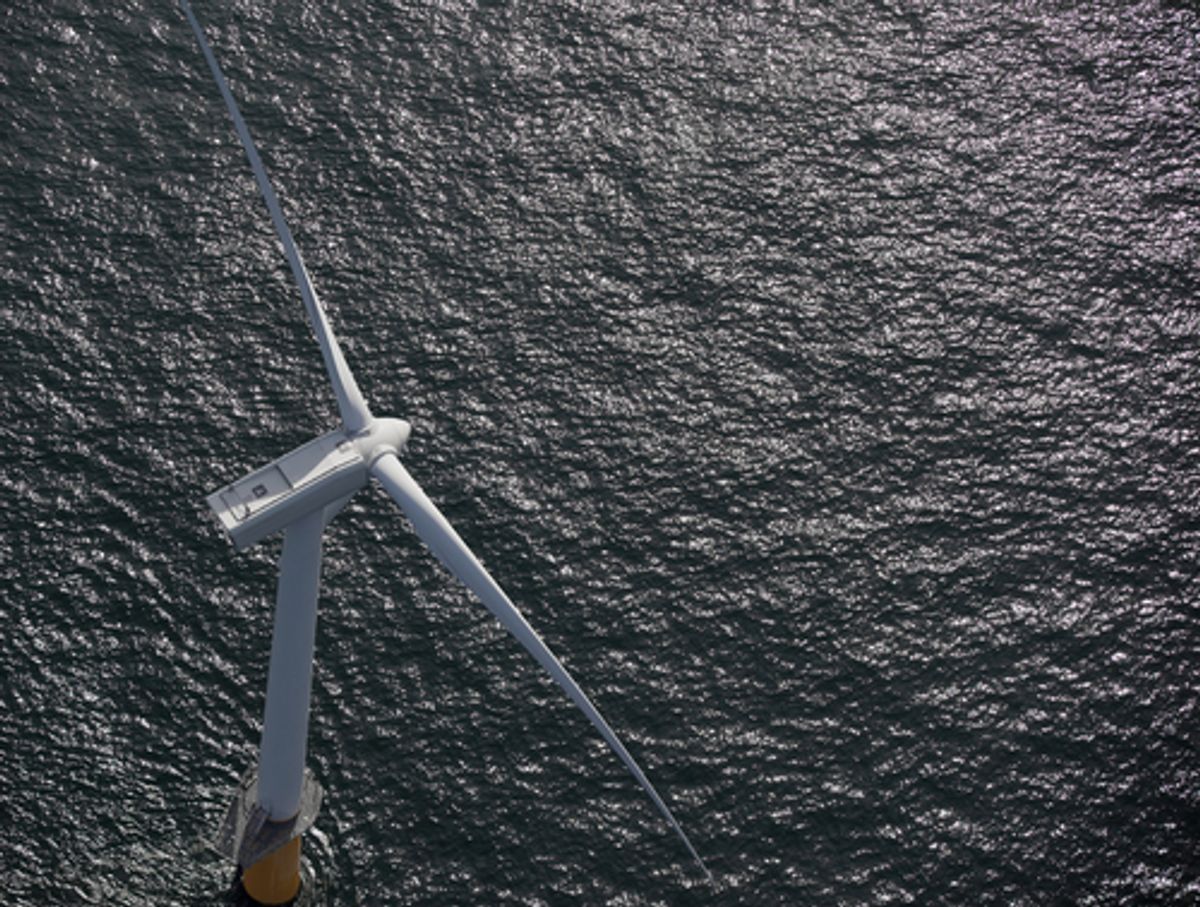What can inspire a nation to make a serious push for clean energy? In the case of Japan, it may have been the ongoing nuclear disaster at Fukushima. Amid safety fears, the New York Times reports, all 50 of the country's nuclear reactors -- which once provided for 30 percent of its energy -- are currently down and awaiting inspection. In the meantime, the government is investing in a massive project to develop offshore wind energy.
The Times explains how technological advances, along with the need for new sources of energy, make this the ideal moment for Japan to embrace wind power:
The project’s backers say that offshore windmills could be a breakthrough for this energy-poor nation. They would enable Japan to use a resource it possesses in abundance: its coastline, which is longer than that of the United States. With an exclusive economic zone — an area up to 200 miles from its shores where Japan has first dibs on any resources — that ranks it among the world’s top 10 largest maritime countries, Japan has millions of square miles to position windmills.
...What sets the project apart from other offshore wind farms around the world, consortium officials say, is that its turbines, and even the substation and electrical transformer equipment, float on giant platforms anchored to the seabed. That technology greatly expands potential locations for offshore wind farms, which have been fixed into the seabed, limiting their location to shallow waters.
For this reason, there have been few great sites for offshore wind farming in Japan, which lies on a continental shelf that quickly gives way to depths that make it unfeasible to build structures into the seabed. But floating wind farms could change the picture in a big way.
“It’s Japan’s biggest hope," said a spokesman for one of the companies involved in the project.
The place they chose to build the first three turbines is particularly symbolic, located just twelve miles offshore from the Fukushima disaster zone.
And here's another nice bit of symmetry: the project, when completed in 2020, is expected to produce about one gigawatt of power -- the same amount as a nuclear reactor.

Shares